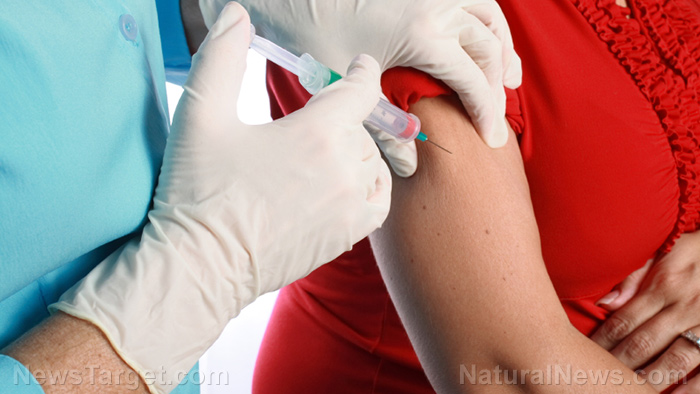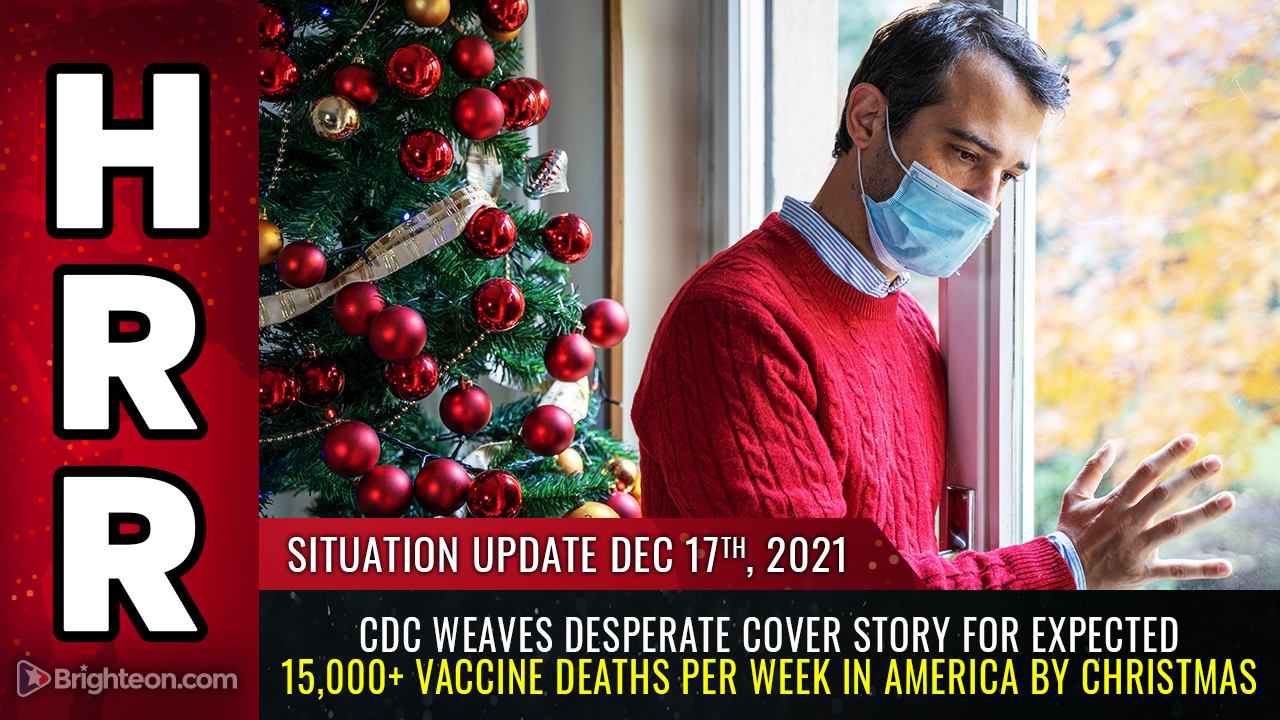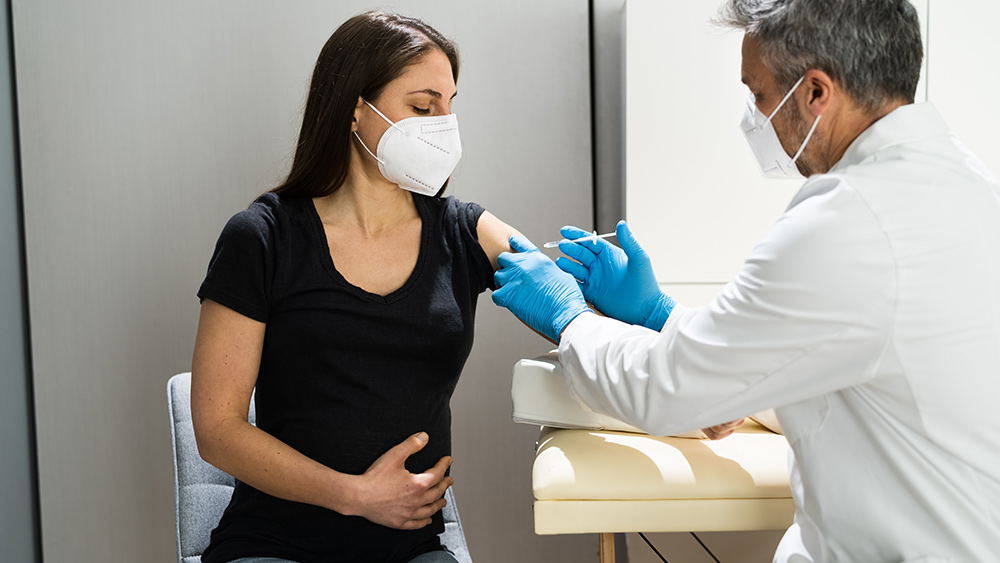History repeats itself: Untested vaccines, adverse events and vaccine rollout suspensions
11/21/2021 / By Nolan Barton

Judi Roberts was a perfectly healthy young woman when she took a swine flu vaccine in November 1976. Two weeks later, she felt numbness starting up her legs, and by the following week, she was totally paralyzed.
Roberts, the wife of Polk Republican Party Chairman Gene Roberts, was a quadriplegic for six months and confined mostly to a wheelchair for over a year. She was diagnosed with Guillain-Barre Syndrome (GBS), a rare disorder in which the body’s immune system attacks the nerves. Weakness and tingling in the extremities are usually the first symptoms of the disease.
In a 1979 interview with the CBS investigative news program “60 Minutes,” Roberts related that, at that time, she felt vaccination was her only chance to survive a potential “major epidemic.”
“I’d never taken any other flu shots, but I felt like this was going to be a major epidemic, and the only way to prevent a major epidemic of a really deadly variety of flu was for everybody to be immunized,” she told host Mike Wallace. “If this disease is so potentially fatal that it’s going to kill a young, healthy man, a middle-aged schoolteacher doesn’t have a prayer.”
It all began at an Army training base in New Jersey. In February 1976, several soldiers at Fort Dix fell ill with flu-like symptoms. Testing revealed that the virus had spread to more than 200 recruits.
An Army doctor sent samples of their throat cultures to the New Jersey Public Health Lab to find out what kind of virus was going around. One of those samples was from Private David Lewis, who had left his sickbed to go on a forced march. Lewis had collapsed on that march and died a few days later.
The New Jersey lab identified the normal kind of flu virus going around that year in most of the soldiers’ throat cultures. Swine flu was only identified in the throat cultures from Lewis and four other soldiers, who recovered completely without the swine flu vaccine.
“If I had known at that time that the boy had been in a sick bed, got up, went out on a forced march and then collapsed and died, I would never have taken the shot,” Roberts said.
You can watch the “60 Minutes” feature on swine flu “scamdemic” here:
Scientists give advice based on incomplete knowledge then and now
Following the much-publicized swine flu “outbreak” at Fort Dix, President Gerald Ford convened a high-profile meeting of scientists to decide if there should be a vaccination program. However, “this was interpreted to be a political event rather than a scientific process,” according to David Sencer, the then-director of the Center for Disease Control, now known as the Centers for Disease Control and Prevention (CDC).
Like what happened throughout the coronavirus (COVID-19) pandemic, the scientists in 1976 could only give the best advice they had based on incomplete knowledge. Many public health officials were skeptical and uncertain too, including Pascal Imperato – the deputy health commissioner and the chair of the task force charged with rolling out the swine flu vaccination program in New York at that time.
“I think all of us were in agreement that yes, it’s probably unlikely but we can’t be absolutely sure,” Imperato said, talking about the possibility of a swine flu pandemic and whether or not a vaccination program was needed then.
In March 1976, Ford announced a $137 million effort to produce a vaccine by the autumn. “Its goal was to immunize every man, woman and child in the U.S., and thus was the largest and most ambitious immunization program ever undertaken in the country,” wrote Pascal Imperato in a 2015 paper reflecting on the events.
Around 46 million Americans took the vaccine. Some 4,000 people suffered devastating side effects from the vaccine. They sued the government for damages amounting to $3.5 billion. Two-thirds of the claims were for neurological damage that led to death in some cases. (Related: Swine flu vaccine victims encouraged to post reports of side effects on SwineFluVaccineReport.com.)
Untested swine flu vaccine may have been used on millions of Americans
Nearly everyone received the swine flu vaccine in a public health facility where a doctor might not be present. Thus, it was up to the CDC to come up with an official consent form that would give the public all the information needed about the swine flu vaccine. The form stated that the swine flu vaccine had been tested.
But the form didn’t mention that the scientists developed another vaccine and that it was the one mostly used in the swine flu vaccination program. That vaccine was called “X-53a.” Sencer, appearing in the same episode of “60 Minutes” in which Roberts was interviewed, couldn’t give a direct answer when Wallace asked him whether X-53a had been tested.
With hindsight, it’s easy to see that the fears at the time were unfounded. The swine flu strain spotted at Fort Dix was not dangerous at all and there would be no pandemic. Later, researchers discovered that benign swine flu strains had been circulating in the U.S. population long before the one identified at the military base.
Thousands suffered and hundreds died from the mass vaccination efforts by the government in 1976 to combat a pandemic that never happened.
Millions of vaccinations resulted to dozens of GBS cases. The syndrome was less understood in the 1970s. Research has since found that the chances of developing the condition after vaccination are extremely small, but the scale of the 1976 rollout meant that a handful of people were bound to be affected.
The vaccine-inflicted GBS in 1976 caused suffering among an unlucky group of people, including Roberts. After months of negative media coverage, reports of GBS cases brought an end to the swine flu affair. Ford’s program was suspended in December 1976 with just over 20 percent of the U.S. population vaccinated.
Cases of blood clots prompt COVID-19 vaccine rollout suspensions
Just like the swine flu vaccination program, COVID-19 vaccine rollouts have been suspended – on many occasions around the world to be more precise. More than a dozen European countries halted their AstraZeneca COVID-19 vaccine rollouts in the past two months because of its potential link to serious blood clots and low platelet counts.
They have since resumed the rollout upon the recommendation of the European Medicines Agency (EMA), the European Union’s drug regulator. However, the EMA last month concluded that blood clots with low platelets should be listed among the side effects of the AstraZeneca COVID-19 vaccine, officially known as Vaxzevria.
The EMA reminded healthcare professionals and people receiving the vaccine to remain aware of the possibility of suffering from blood clots combined with low levels of blood platelets occurring within two weeks of vaccination. Most of the cases reported have occurred in women under 60 years of age within two weeks of vaccination.
The Pharmacovigilance Risk Assessment Committee (PRAC), a committee under EMA responsible for assessing and monitoring the safety of human medicines, noted that the blood clots occurred in veins in the brain (cerebral venous sinus thrombosis) and the abdomen (splanchnic vein thrombosis) and in arteries, together with low levels of blood platelets and sometimes bleeding.
On April 13, the CDC and the Food and Drug Administration (FDA) issued a joint statement recommending a “pause in the use” of the Johnson & Johnson COVID-19 vaccine “out of an abundance of caution.”
The CDC and FDA also advised the people who have received the Johnson & Johnson COVID-19 vaccine and developed “severe headache, abdominal pain, leg pain or shortness of breath within three weeks after vaccination” to contact their health care provider. They also asked the health care providers to report adverse events to the Vaccine Adverse Event Reporting System (VAERS).
The suspension has since been lifted.
Follow Immunization.news for more news and information related to vaccines.
Sources include:
Tagged Under: bad medicine, Big Pharma, blood clot, coronavirus, covid-19, COVID-19 vaccine, deaths, epidemic, Fort Dix, genocide, Guillain-Barré syndrome, low platelet count, medical experiments, pandemic, President Gerald Ford, spike protein, swine flu, swine flu outbreak, swine flu strain, swine flu vaccine, Vaccination Program, vaccines, X-53a
RECENT NEWS & ARTICLES
Vaccines.News is a fact-based public education website published by Vaccines News Features, LLC.
All content copyright © 2018 by Vaccines News Features, LLC.
Contact Us with Tips or Corrections
All trademarks, registered trademarks and servicemarks mentioned on this site are the property of their respective owners.





















